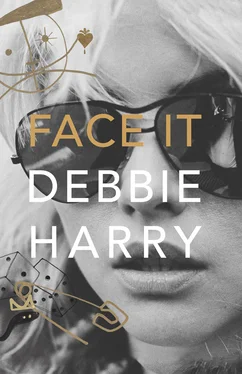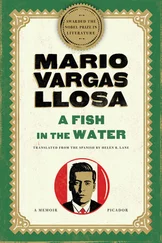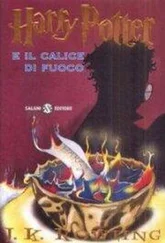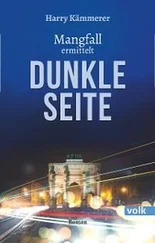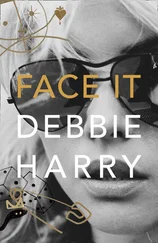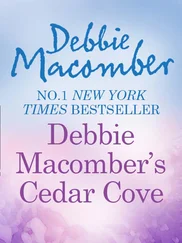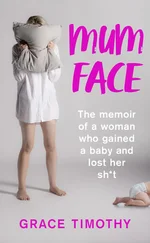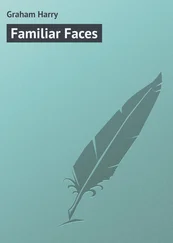Paul was a bearded, folky, big bear of a man. He sang and played a little guitar and he was another likeable hustler. It was the age of everyone looking for the golden opportunity and in the midsixties, record companies were working their own major game: so loaded with cash, they’d put bands up in houses and give them money to live on and to record. A kind of patronage system. And if the music didn’t sell, then fine, they had an excuse for a write-off.
Traffics in Saccharine Details
Painting by Robert Williams
The Purposed Mysteries, Fears and Terrifying Experiences of Debbie Harry
Remedial title: The Jersey Towhead Who
Eventually there were eight or nine people in the Willows after Paul kept adding and adding. Peter Brittain, who also played guitar and sang, was married to another of my closest friends since childhood, Melanie. There was a double bass player, Wayne Kirby, who was from Paterson, where both my grandmothers lived, and had left to study at Juilliard. There was a woman named Ida Andrews, also from Juilliard, who was a real pistol and played oboe, flute, and bassoon. We had keyboards and a vibraphone and strings. It was sort of like a small orchestra. A kind of baroque folk music but with these percussive things going on. I played finger cymbals, tamboura, and tambourine. Our producer Artie Kornfeld also played bongos. More famously he went on to create the Woodstock Festival with Michael Lang. We had two drummers, Anton Carysforth and Gil Fields. There was also a very sweet and good-hearted man named Freddy Ravola, whom we called our “spiritual adviser,” because of his positivity. He worked as our roadie. Not that we did many shows.
In the summer of ’68 we released our debut album, Wind in the Willows . It was my first time on a record. I sang lead on one song, “Djini Judy,” but aside from that I was like wallpaper, something pretty to stand in the back in my hippie clothes and with my long brown hair parted in the middle, going “Oooooo.” Artie Kornfeld, who produced the album, was working at Capitol Records as their “vice president of rock” and seemed to have boundless company money to spend on us. It was not a quick album to make. Apparently, Capitol was going to give us a big push. All I can recall is playing one big show in Toronto, opening up for a Platters cover band, the Great Pretenders, or something like that. But what I do clearly remember is Paul encouraging all the band members “to get closer to each other” with some helpful doses of acid and free love. Ha! Nice ploy. But I did not drink the Kool-Aid.
I did go to Woodstock with my friend Melanie and her husband, Peter, and that was a massive mud pit. Torrential rain. People were covered with mud and jumping into the stream to wash it off. So, we bailed and moved our tent to higher ground. Which was great, until we were forced to move again in the middle of the night, to make room for a helicopter landing place.
I remember there was this group called the Hog Farm from San Francisco who set up a soup kitchen and they were feeding everyone, and I do mean everyone. Hundreds of thousands of people. Amazing. I just walked around on my own, seeing all the people, meeting some of them, watching bands, and waiting for Jimi Hendrix to play.
I quit the Wind in the Willows. I enjoyed performing; I even wrote something for the second album entitled “Buried Treasure.” The album was never released and apparently the tapes are lost. I wouldn’t bother looking for them. I left because of big musical differences and bigger personal differences and because the band never played. And I wasn’t in control, I was just a decorative asset in the band and I outgrew it. And I knew that I wanted to do something that was more rock.
When the Wind in the Willows and I parted company, I moved in with the last drummer that was in the band, Gil Fields. He was a strange-looking guy with a great big Afro and startling blue eyes. He was completely bonkers but an incredible drummer, a prodigy who had been playing drums since he was four years old. I gave up my apartment on St. Mark’s Place and decided to get rid of everything and just have one suitcase of belongings and a tamboura and a tiny TV that my mother had given me. I moved into Gil’s place at 52 East First Street. I needed a job and it was Gil who suggested I try to get a job at Max’s Kansas City. He said, “Well it’s this place where everybody hangs out, Max’s, have you heard of it?” “No.” “Well it’s up on Park Avenue South right near Union Square.” I had never really worked as a waitress before, except in a diner in New Jersey when I was in high school. But the owner, Mickey Ruskin, gave me a job.
The very first time I did heroin was with Gil. He was nervous and hyperthyroid and excitable—he was a wreck. If ever there was anybody that needed heroin, it was Gil. I remember his tapping out this tiny little line of gray powder. And we snorted it up. And I felt a kind of rush I’d never felt before. And I thought, Oh, this is so nice, so relaxing, aah, I don’t have to think about things, and it was so delicious and delightful. For those times when I wanted to blank out parts of my life or when I was dealing with some depression, there was nothing better than heroin. Nothing.
Max’s Kansas City was the place to be seen. That was another fabulous time in New York, no end of creativity and characters, and most of downtown seemed to wind up in Max’s. I worked the four-till-midnight shift and other times seven thirty until it closed. James Rado and Gerome Ragni would be in the back room every afternoon, writing the musical Hair . Little by little, as the day turned into night, the crowd got wilder and freakier. Andy Warhol would always come in with his people and take over the back room. I saw Gerard Malanga and Ultraviolet, who had been Salvador Dalí’s lover and was now a Warhol superstar; Viva, another Warhol superstar; Candy Darling, a stunning transgender actress; the flamboyant Jackie Curtis; Taylor Mead; Eric Emerson; Holly Woodlawn; and so many others. Whatever you were doing, you couldn’t help but stop and stare at Candy. Edie Sedgwick was around sometimes, and Jane Forth, another of the Factory’s It Girls.
There were Hollywood stars too—James Coburn; Jane Fonda. And rock stars—Steve Winwood; Jimi Hendrix; Janis Joplin, who was lovely and a big tipper. So many of them. I served dinner to Jefferson Airplane two days before they left for Woodstock.
And then there was Mr. Miles Davis. He sat back against the banquette along the outside wall upstairs, like a black king. No way he could have known this little white waitress was a musician too—and maybe she didn’t know either at that point . . .
Why did they seat him in my section—not the one at the end of the earth but the one on the other side of the moon? The section that overlooked what often became the stage, late at night. The tables against the wall were slightly raised on a low step-up platform. He came there with a stunning white woman, a blonde as I remember.
I came up to their table in my little black miniskirt, my black apron, and my T-shirt, with my long hippie hair au naturel—limping from a terribly infected foot injury. The blister and my slashed Achilles were so painful I had to wear these clunky backless sandals which were absurd for work, but I was young enough that it didn’t matter.
Would they care for drinks? She spoke, he was silent, still as a dead calm, statuesque with his ebony skin shining softly in the dim red light of the upstairs back room. He had his own light, glowing, shimmering, alive with his thoughts. Would they like to eat? He remained silent while she ordered for both of them. I don’t know if he ate his dinner. I couldn’t bring myself to watch him chew, but I did see him bend forward as if to take a bite of his steak.
Читать дальше
